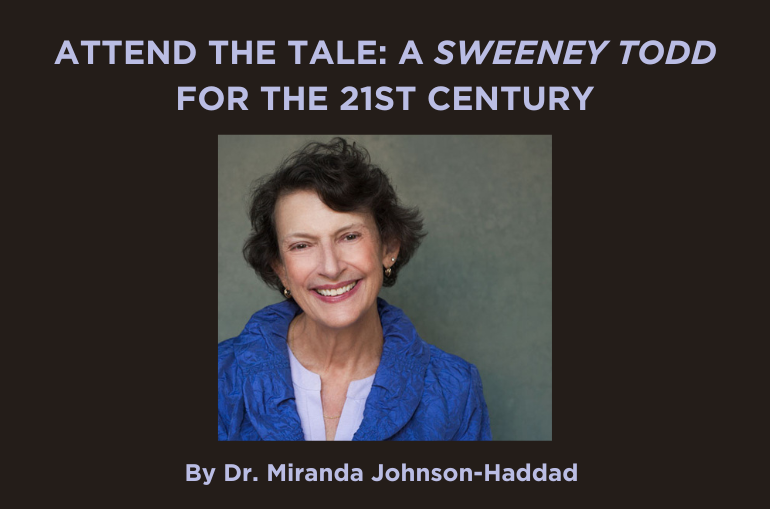“Every Inch a King”: The Universal and the Human in Shakespeare’s King Lear

By A Noise Within
February 16, 2017
Need a refresher on King Lear before the show? Long-time ANW contributing scholar Dr. Miranda Johnson-Haddad gives you a quick historical, psychological, and cultural analysis of Shakespeare’s masterpiece.
“Every Inch a King”: The Universal and the Human in Shakespeare’s King Lear
By Miranda Johnson-Haddad, Ph.D.
Although King Lear has historically been regarded as Shakespeare’s masterpiece, it has also endured an extremely vexed reception down the ages, seemingly because of its profoundly tragic vision. At one time the play appears to have been considered too depressing even to be performed, and for over 150 years the only version seen on the English stage was the infamous 1681 re-write by the Irish poet Nahum Tate, which omits the Fool and, through the addition of several new characters and musical numbers (among other questionable emendations), ultimately results in a happy ending. While the mere idea of “improving” Shakespeare in this way may be appalling to some twenty-first century theatre-goers, many of Tate’s contemporaries and later critics approved of the changes because the events as presented in Shakespeare’s original were perceived as so unjustly tragic as to be downright offensive. Even Samuel Johnson endorsed the so-called “Tatification” of Lear, noting in the preface to the play in his 1765 edition of Shakespeare’s dramatic works that “I was many years ago so shocked by [the original ending of the play], that I know not whether I ever endured to read again the last scenes… till I undertook to revise them as an editor.”
King Lear was entered in the London Stationers’ Register in late 1607, and it thus dates from the same period as Shakespeare’s other major tragedies, Hamlet, Othello and Macbeth. The storyline of Lear would have been familiar to Shakespeare’s audiences, for its many sources were familiar and varied, encompassing everything from Holinshed’s historical Chronicles (1577) to well-known fairy tales. Not present in Shakespeare’s historical sources is the subplot involving Gloucester and his sons, “legitimate” Edgar and the bastard son, Edmund. This subplot serves to underscore one of the central psychological themes of the play, which many scholars have described as being about the fury of the neglected child. Shakespeare’s brilliance in depicting that fury as it plays out in the characters of Goneril, Regan and Edmund ultimately prevents them from devolving into stock villains. Goneril’s pained acknowledgment to Regan that Lear “always loved our sister most”; Regan’s sharp retort to Lear’s claim that he gave her “all” — “And in good time you gave it”; Edmund’s poignant deathbed assertion, “Yet Edmund was belov’d!”; and many similarly revealing lines fully render these flawed but human characters in all their psychological complexity. They commit unspeakably evil acts; and yet a modern audience will readily comprehend that unspeakable psychological evil was also visited upon them and that actions have consequences. As Edmund himself acknowledges at the end of the play, “The wheel has come full circle. I am here.”
King Lear is both a domestic family drama and a timeless, universal tragedy because it operates simultaneously on both a local and a global level. The play depicts the unravelling of a family when its patriarch slides into the merciless ravages of dementia, and decades of family dysfunction and anger are consequently revealed. But because that patriarch is also a king, and his daughters are the rulers of powerful realms themselves, the consequences of the family breakdown extend far beyond the immediate domestic arena. The inexorable quality of Lear’s horrifying descent into madness, and the resulting implosion of his family and then his kingdom, resonate today as powerfully as they must have done in the seventeenth century, when the political was also fundamentally personal (as Shakespeare’s audience had good reason to know). Theatrically speaking, Lear’s decline also remains one of the towering challenges confronting any actor; yet despite its formidable physical and emotional challenges, the role often proves irresistible, with the result that recent years have seen many well-known figures, from Ian Holm to Ian McKellen to Glenda Jackson, tackle this Everest of roles.
The powerful themes and the vivid imagery of the play have influenced many artists and authors over the centuries and continue to do so today. Many viewers (fans of Shakespeare and J.R.R. Tolkien alike) noted that in Peter Jackson’s 2002 film The Two Towers (the second installment of his Lord of the Rings trilogy), the moving scene of King Theoden’s awakening from the spell cast upon him by Saruman, and his subsequent recognition of his beloved niece, Eowyn, recalls Lear’s awakening and recognition of Cordelia late in the play. Jane Smiley’s mesmerizing novel A Thousand Acres (written in 1991 and made into a film in 1997) set the play on a large Iowa farm in late twentieth-century America. And outside of the realm of art, the very real risks faced by those who attempt — as do Cordelia, Kent and the Fool — to speak truth to power remain all too apparent to this day.
If it is hard to believe that King Lear was written by the same author who penned the delightful comedies of the 1590’s that can still make audiences laugh today, it is in some ways even more difficult to believe that this same author would go on to compose the Romance plays, such as The Winter’s Tale and The Tempest, with their emphasis on compassion and forgiveness. There is nothing uplifting or redemptive about the ending of Lear; all is darkness, and as Edgar observes, “we that are young / Shall never see so much, nor live so long.” Our only consolation — and it is a poor one — lies in our ability to accept the inevitable, and if there is any glimmer of hope in this most tragic of plays, it centers around whether we can manage to resign ourselves to endure whatever we must. “Ripeness is all,” as Edgar reminds Gloucester, who is forced to agree: “And that’s true too.” But regardless of our individual success in achieving such perspective, we are certainly all capable of experiencing the redemptive power that genius and art bestow; and that power is what Shakespeare offers us with this enduring, and enduringly moving, play.
ABOUT THE AUTHOR
During her distinguished academic career, Dr. Miranda Johnson-Haddad has taught in the English departments at Vassar College, Howard University and UCLA, among other institutions. She has taught subjects including Shakespeare, Renaissance French and Italian literature, poetry, and British literature, and she is the author of several published works on Shakespeare, including Staging Shakespeare: Essays in Honor of Alan C. Dessen, and scholarly articles including “Harry Potter and the Shakespearean Allusion” and “Childhood Dreams and Nightmares: Children in Productions of A Midsummer Night’s Dream.”
Dr. Johnson-Haddad was a Performance Editor of the Shakespeare Quarterly from 1996-2003, led lectures and workshops on Shakespeare at the world-renowned Shakespeare Theatre DC from 1989-1999, and acted as Scholar in Residence at The Folger Shakespeare Library in Washington DC. She also served as an expert witness in a trial involving the film “Shakespeare in Love,” and at the Mock Trial for the United States Supreme Court, Honorable Justice Ruth Bader Ginsburg presiding, which examined the question of anti-Semitism in The Merchant of Venice. She holds a BA from Princeton in Comparative Literature, and a Ph.D from Yale University in Renaissance Studies.








